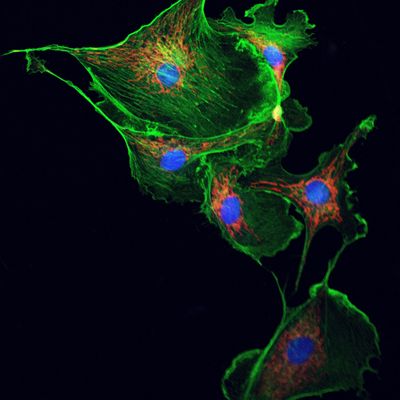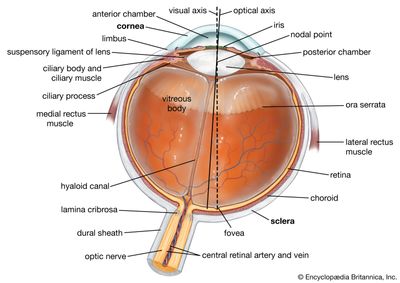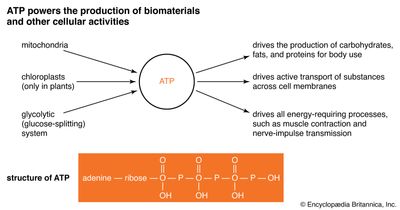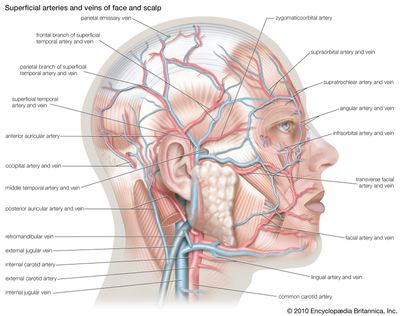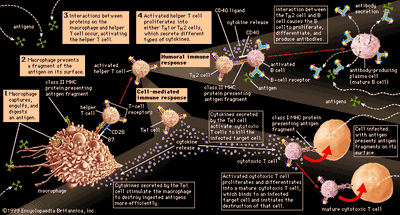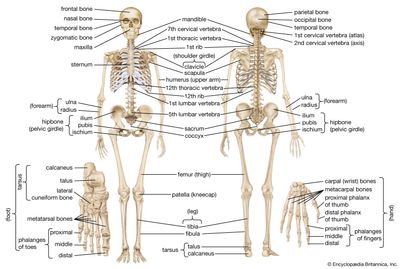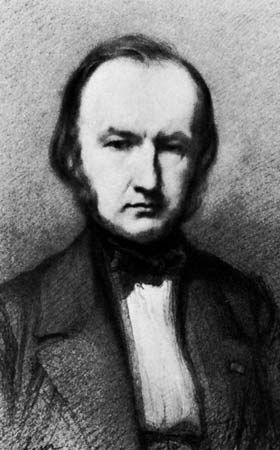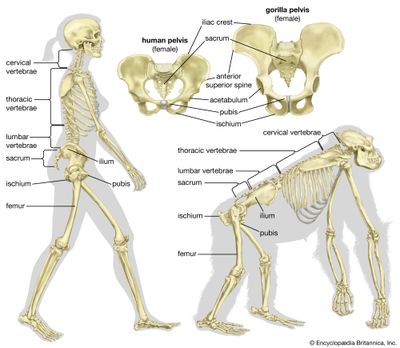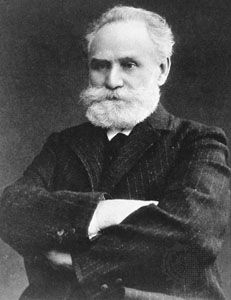Anatomy & Physiology
Human beings have long been curious about the way that things work, and that curiosity includes wondering about how we ourselves work. The fields of anatomy and physiology involve studying the structures of bodies and the way that those structures and bodies function.
Anatomy & Physiology Encyclopedia Articles
Featured Articles
brain
Brain, the mass of nerve tissue in the anterior end of an organism. The brain integrates sensory information and directs motor responses; in higher vertebrates it is also the centre of learning. The human...
human body
Human body, the physical substance of the human organism, composed of living cells and extracellular materials and organized into tissues, organs, and systems. Human anatomy and physiology are treated...
mitochondrion
Mitochondrion, membrane-bound organelle found in the cytoplasm of almost all eukaryotic cells (cells with clearly defined nuclei), the primary function of which is to generate large quantities of energy...
human eye
Human eye, in humans, specialized sense organ capable of receiving visual images, which are then carried to the brain. The eye is protected from mechanical injury by being enclosed in a socket, or orbit,...
physiology
Physiology, study of the functioning of living organisms, animal or plant, and of the functioning of their constituent tissues or cells. The word physiology was first used by the Greeks around 600 bce...
meiosis
Meiosis, division of a germ cell involving two fissions of the nucleus and giving rise to four gametes, or sex cells, each possessing half the number of chromosomes of the original cell. A brief treatment...
blood
Blood, fluid that transports oxygen and nutrients to the cells and carries away carbon dioxide and other waste products. Technically, blood is a transport liquid pumped by the heart (or an equivalent structure)...
anatomy
Anatomy, a field in the biological sciences concerned with the identification and description of the body structures of living things. Gross anatomy involves the study of major body structures by dissection...
cell cycle
Cell cycle, the ordered sequence of events that occur in a cell in preparation for cell division. The cell cycle is a four-stage process in which the cell increases in size (gap 1, or G1, stage), copies...
immune system
Immune system, the complex group of defense responses found in humans and other advanced vertebrates that helps repel disease-causing organisms (pathogens). Immunity from disease is actually conferred...
human skeleton
Human skeleton, the internal skeleton that serves as a framework for the body. This framework consists of many individual bones and cartilages. There also are bands of fibrous connective tissue—the ligaments...
Claude Bernard
Claude Bernard was a French physiologist known chiefly for his discoveries concerning the role of the pancreas in digestion, the glycogenic function of the liver, and the regulation of the blood supply...
comparative anatomy
Comparative anatomy, the comparative study of the body structures of different species of animals in order to understand the adaptive changes they have undergone in the course of evolution from common...
Ivan Pavlov
Ivan Pavlov was a Russian physiologist known chiefly for his development of the concept of the conditioned reflex. In a now-classic experiment, he trained a hungry dog to salivate at the sound of a metronome...



